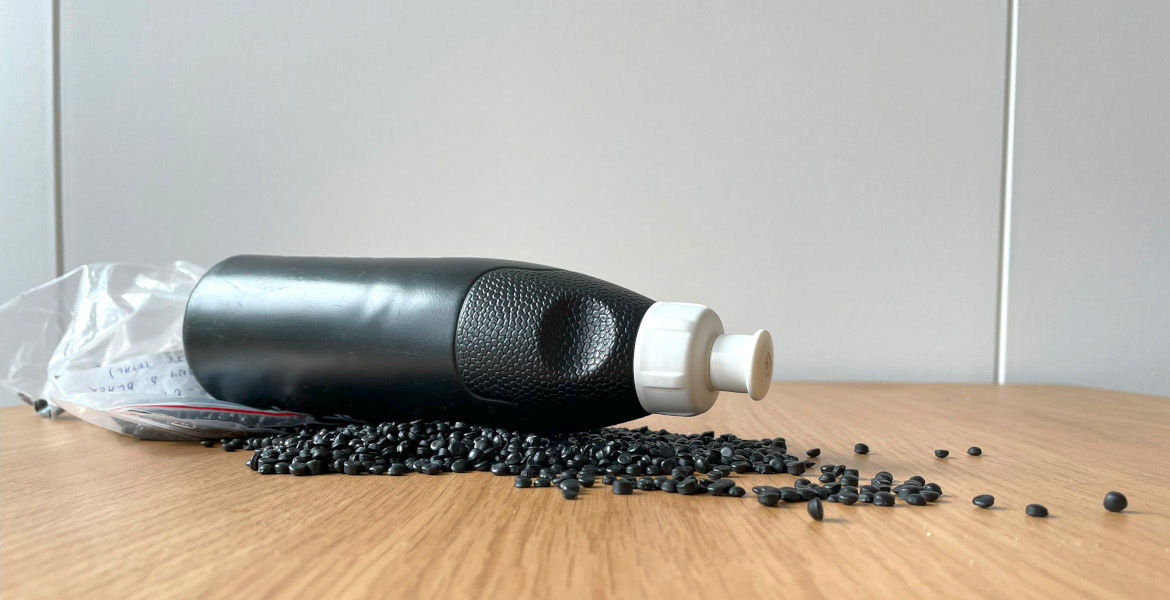Recycled plastic leaches chemicals that can affect hormones and metabolism in zebrafish larvae, according to research from Sweden and Germany. A single plastic pellet made from recycled plastic could contain more than 80 chemicals.
Plastic pollution worldwide poses a significant threat to both human health and the environment. Recycling plastic has been seen as part of the solution, but since plastic contains thousands of chemical additives and other substances that can be toxic, and these are almost never declared, dangerous chemicals can end up in recycled products.
To investigate this further, researchers from the University of Gothenburg, Sweden, purchased plastic pellets recycled from polyethylene plastic from different parts of the world. Polyethylene, abbreviated as PE, is a type of plastic used in numerous products such as plastic bags, bottle caps, pipes, ropes, toys, and household items. These types of plastic pellets are used to manufacture products like plastic bags or hard plastic water bottles.
Altered hormones
The researchers let the plastic pellets sit in water for 48 hours. After this, they exposed zebrafish larvae to the water for five days. There, the researchers discovered that gene expression in the larvae changed in genes linked to fat metabolism and hormone regulation.
— These short leaching and exposure times are yet another indicator of the risks that chemicals in plastic pose to living organisms. The effects we recorded show that plastic in nature has the potential to alter fish physiology and health, says Azora König Kardgar, lead author and researcher in ecotoxicology at the University of Gothenburg, in a press release.
Furthermore, researchers conducted a chemical analysis of the chemicals that leached from the plastic pellets into water. They discovered a variety of different chemical compounds, but these differed between different pellet samples. However, a single pellet could contain over 80 different chemicals.
— We identified common plastic chemicals, including UV stabilizers and plasticizers, as well as chemicals not used in plastic manufacturing, including pesticides, pharmaceuticals, and biocides. These may have contaminated the plastic during its first use phase, before it becomes waste to be recycled. This is further evidence of the complexity of plastic waste flows and the toxic chemicals that contaminate recycled plastic, says Eric Carmona, researcher at the Department of Exposure Science, Helmholtz Centre for Environmental Research in Leipzig, Germany.
Recycled plastic not safe
Previous research has also shown that exposure to toxic chemicals in plastic has similar effects on humans as on zebrafish larvae. Certain chemicals used in plastic are known to disrupt hormones, which in turn can have negative effects on fertility and children's development, as well as having links to certain forms of cancer and metabolic disorders, including obesity and diabetes. The researchers therefore point out that this is among the biggest obstacles with recycled plastic – that you simply never know for certain which chemicals will end up in an object manufactured from this plastic.
Finally, the researchers conclude that plastic is not recycled in a safe and sustainable way unless dangerous chemicals are addressed.
— Our study clearly shows the need to address toxic chemicals in plastic materials and plastic products throughout their entire lifecycle. We cannot produce and use recycled plastic safely if we cannot trace chemicals through the entire production, use, and waste phase, says Professor Bethanie Carney Almroth.












